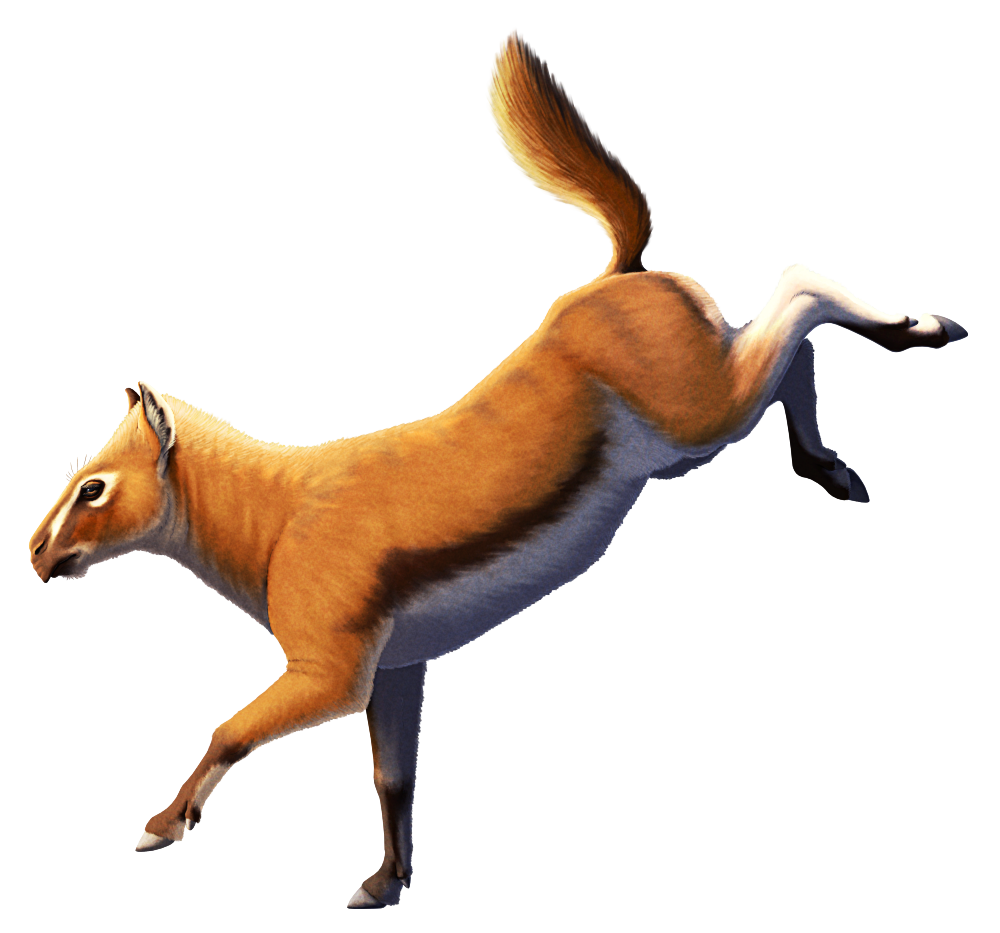Neolicaphrium recens here might look like some sort of early horse, but this little mammal was actually something else entirely.
Known from southern South America during the late Pleistocene to early Holocene, between about 1 million and 11,000 years ago, Neolicaphrium was the last known member of the proterotheriids, a group of South American native ungulates that were only very distantly related to horses, tapirs, and rhinos. Instead these animals evolved their remarkably horse-like body plan completely independently, adapting for high-speed running with a single weight-bearing hoof on each foot.
Neolicaphrium was a mid-sized proterotheriid, standing around 45cm tall at the shoulder (~1’6″), and unlike some of its more specialized relatives it still had two small vestigial toes on each foot along with its main hoof. Tooth microwear studies suggest it had a browsing diet, mainly feeding on soft leaves, stems, and buds in its savannah woodland habitat.
It was one of the few South American native ungulates to survive through the Great American Biotic Interchange, when the formation of the Isthmus of Panama allowed North and South American animals to disperse into each other’s native ranges. While many of its relatives had already gone extinct in the wake of the massive ecological changes this caused, Neolicaphrium seems to have been enough of a generalist to hold on, living alongside a fairly modern-looking selection of northern immigrant mammals such as deer, peccaries, tapirs, foxes, jaguars… and also actual horses.
Some of the earliest human inhabitants of South America would have seen Neolicaphirum alive before its extinction. We don’t know whether they had any direct impact on its disappearance – but since the horses it lived alongside were hunted by humans and also went extinct, it’s possible that a combination of shifting climate and hunting pressure pushed the last of the little not-horses over the edge, too.

